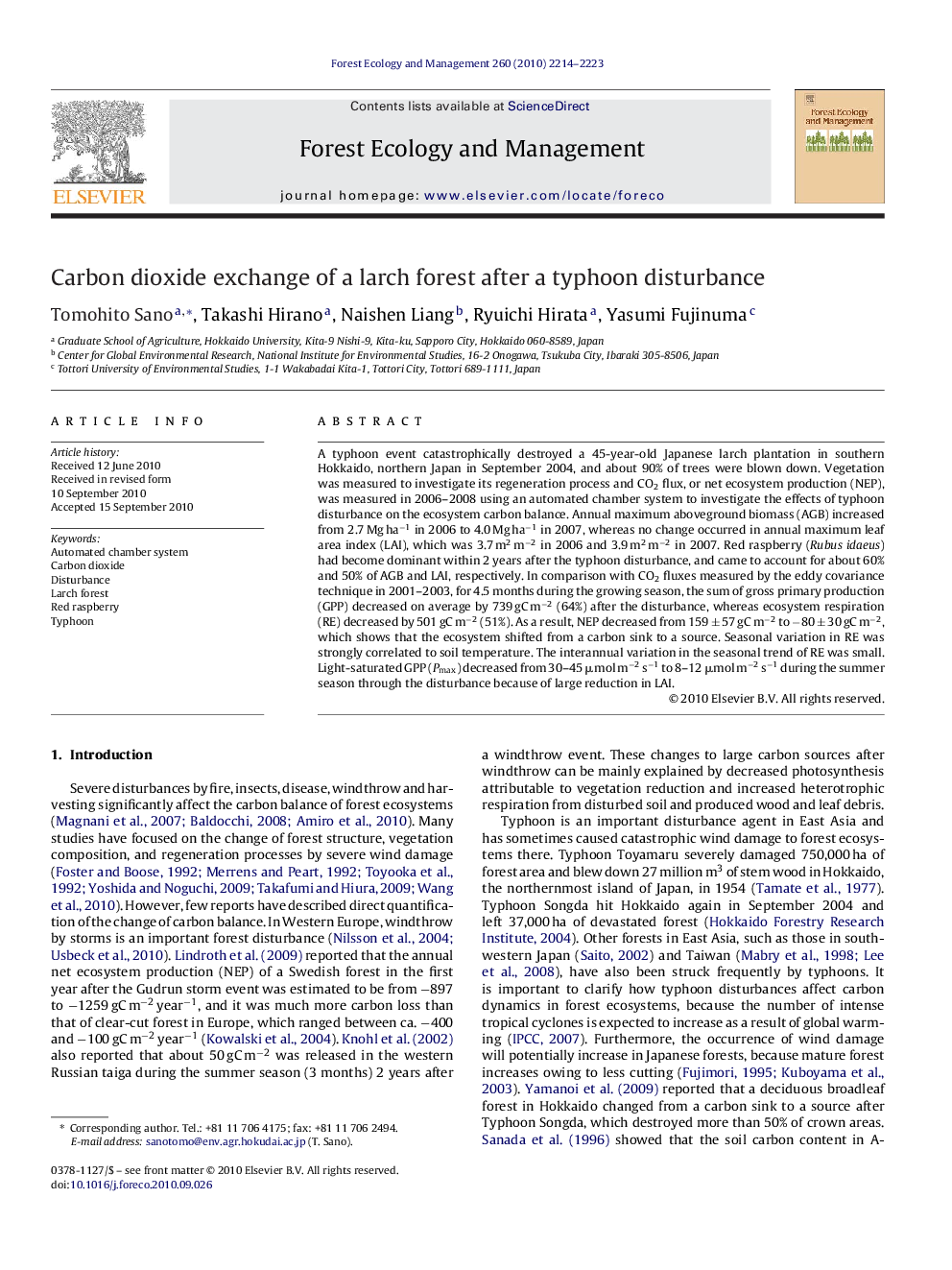| کد مقاله | کد نشریه | سال انتشار | مقاله انگلیسی | نسخه تمام متن |
|---|---|---|---|---|
| 87793 | 159266 | 2010 | 10 صفحه PDF | دانلود رایگان |

A typhoon event catastrophically destroyed a 45-year-old Japanese larch plantation in southern Hokkaido, northern Japan in September 2004, and about 90% of trees were blown down. Vegetation was measured to investigate its regeneration process and CO2 flux, or net ecosystem production (NEP), was measured in 2006–2008 using an automated chamber system to investigate the effects of typhoon disturbance on the ecosystem carbon balance. Annual maximum aboveground biomass (AGB) increased from 2.7 Mg ha−1 in 2006 to 4.0 Mg ha−1 in 2007, whereas no change occurred in annual maximum leaf area index (LAI), which was 3.7 m2 m−2 in 2006 and 3.9 m2 m−2 in 2007. Red raspberry (Rubus idaeus) had become dominant within 2 years after the typhoon disturbance, and came to account for about 60% and 50% of AGB and LAI, respectively. In comparison with CO2 fluxes measured by the eddy covariance technique in 2001–2003, for 4.5 months during the growing season, the sum of gross primary production (GPP) decreased on average by 739 gC m−2 (64%) after the disturbance, whereas ecosystem respiration (RE) decreased by 501 gC m−2 (51%). As a result, NEP decreased from 159 ± 57 gC m−2 to −80 ± 30 gC m−2, which shows that the ecosystem shifted from a carbon sink to a source. Seasonal variation in RE was strongly correlated to soil temperature. The interannual variation in the seasonal trend of RE was small. Light-saturated GPP (Pmax) decreased from 30–45 μmol m−2 s−1 to 8–12 μmol m−2 s−1 during the summer season through the disturbance because of large reduction in LAI.
Research highlights▶ A Japanese larch plantation in Hokkaido, Japan was destroyed by a typhoon. ▶ The larch plantation transformed to a shrubland dominated by red raspberry. ▶ This site changed from a carbon sink to a source after the disturbance. ▶ Vegetation regeneration caused an increase of GPP and decreased net CO2 emissions.
Journal: Forest Ecology and Management - Volume 260, Issue 12, 15 December 2010, Pages 2214–2223